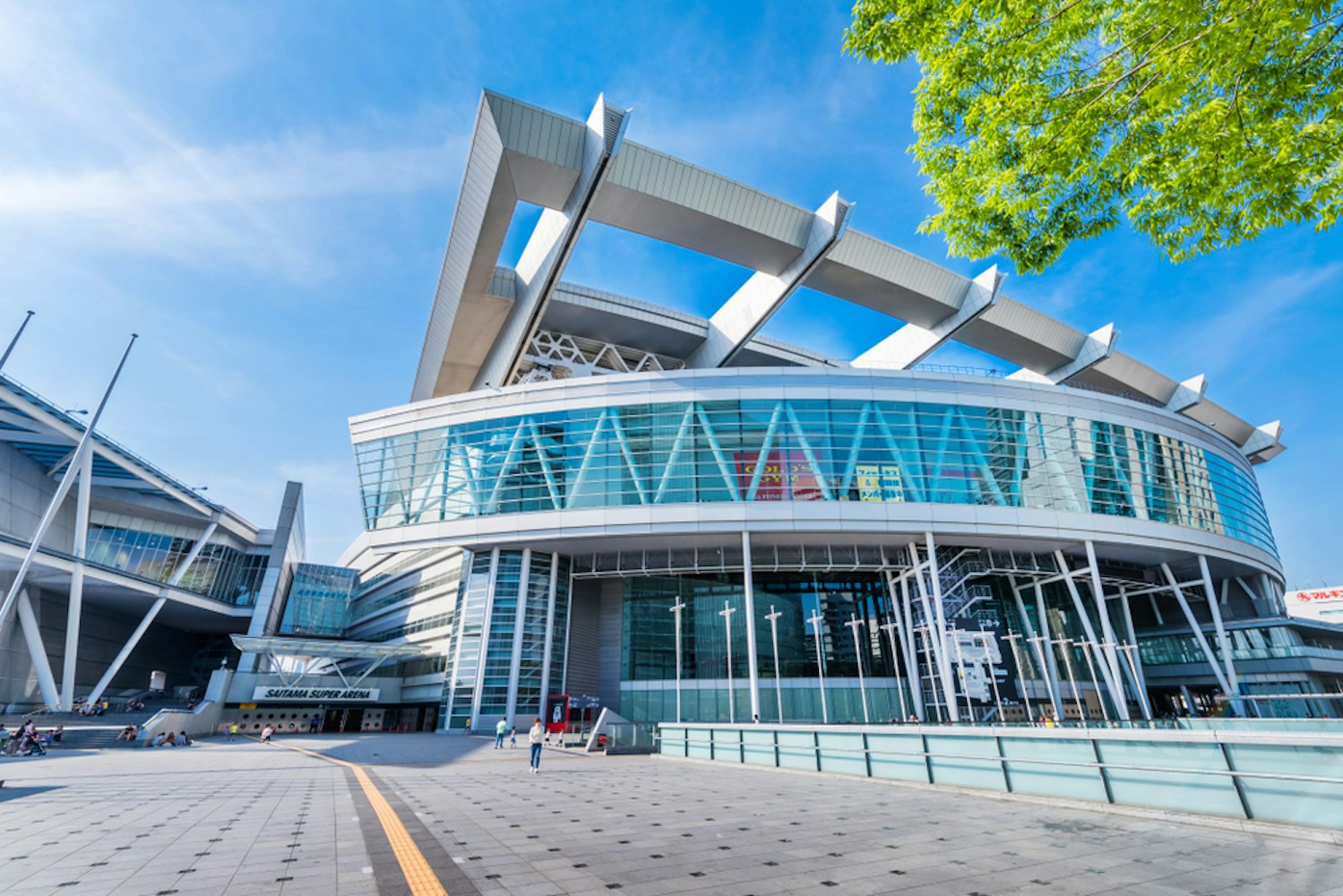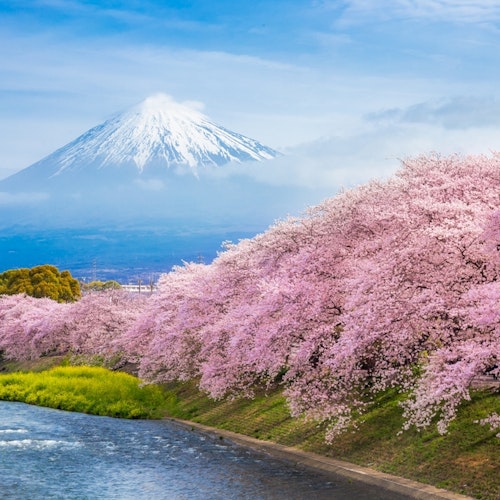

計画埼玉からの日帰り旅行東京へ?ここでは、旅をスムーズで楽しいものにするための最適な交通手段に関する包括的なガイドをご紹介します。このガイドでは、さまざまな交通手段、その利点、および素晴らしい体験を確実にするためのヒントについて説明します。
東京のすぐ北に位置する埼玉県は、歴史、公園、文化的な名所で知られています。東京に近いため、日帰り旅行に最適です。首都東京には、無限のアトラクション、食事、エンターテイメントのオプションがあります。これら2つの場所間の移動は、優れた交通ネットワークのおかげで簡単です。
列車は、埼玉と東京の間を移動するための最も人気があり効率的な方法です。彼らは頻繁に、速く、接続が良好であるため、日帰り旅行に最適です。

JR上野東京ラインは、埼玉と東京間の移動に最適な選択肢の1つです。東京の上野と埼玉の大宮を結ぶ路線です。所要時間は約30〜40分で、列車が頻繁に運行されているため、長く待つ必要はありません。上野駅は主要なハブであり、東京の他の部分に簡単にアクセスできます。
移動時間:30〜40分
周波数:高い
局:埼玉県上野市(大宮市)
JR湘南新宿ラインも、東京の新宿から埼玉の大宮まで走る優れた選択肢です。所要時間は約30分です。世界で最も忙しい駅の1つである新宿駅は、数多くのアトラクション、ショップ、レストランへのアクセスを提供しています。
移動時間:30分
周波数:高い
局:新宿、埼玉(大宮)

オールアクセスのJRパスで日本を無制限に発見しましょう!
埼京線は、東京の池袋と埼玉の大宮を結んでいます。直行便は約35分で、通勤者や旅行者に人気があります。池袋は、ショップやレストラン、エンターテイメント施設が充実している主要駅です。
移動時間:35分
周波数:高い
局:池袋、埼玉(大宮)
高崎線は、東京駅から大宮まで高速で直通のルートを提供しています。所要時間は約30〜40分です。東京駅は市内の主要ターミナルであり、新幹線を含む多くの鉄道路線へのアクセスを提供しています。
移動時間:30〜40分
周波数:高い
局:東京、埼玉(大宮)

新幹線は、埼玉と東京を結ぶ最速の移動手段です。大宮駅を出発し、新幹線で約25分で東京に到着します。通常の列車よりも高価ですが、特にスケジュールが厳しい場合は、速度と快適さに見合う価値があります。
移動時間:25分
周波数:高い
局:東京・大宮
費用:定期列車より高
埼玉と東京を結ぶバスサービスがいくつかあります。バスは電車よりも時間がかかり、通常は約1時間以上かかりますが、乗り換えのない直行ルートが必要な場合は、バスが適しています。バスは快適で、Wi-Fiやトイレなどの設備が整っていることがよくあります。
移動時間: 60+ 分
周波数:適度
費用:新幹線より低い
埼玉から東京へのドライブはオプションですが、特にピーク時には交通量が多いため、最速ではありません。距離は約30〜40キロメートルで、交通状況にもよりますが、約1時間以上かかります。東京の駐車場は難しくて高額な場合があるため、特別な理由で車が必要な場合を除き、公共交通機関を利用するのがよいでしょう。
移動時間:60+分(トラフィックによる)
柔軟性:高い
費用:変動(ガソリン、通行料、駐車場)
ピーク時の回避:ラッシュアワー(午前7時から9時と午後5時から7時)の旅行は混雑する可能性があります。より快適な旅のために、これらの時間を避けてみてください。
ICカードを使う:ICカードのようなSuica(スイカ)またはPasmo は、異なる鉄道路線とバス間の乗り換えをシームレスにします。
スケジュールの確認:電車やバスのスケジュールは、特に早朝や深夜に旅行する予定の場合は非常に重要です。
トラベルライト:荷物を運ぶ場合は、新幹線とバスの方がスペースが広く便利です。

大宮駅は埼玉県の主要なハブ空港で、新幹線を含む複数の鉄道路線に接続しています。それはあなたにとって便利な出発点です東京への旅.駅構内にはショップやレストランなど多くの施設があり、旅行前に時間を過ごすのにもおすすめです。
大宮駅は文化的なホットスポットでもあり、近くには鉄道博物館などの観光スポットがあります。この博物館は、インタラクティブな展示、シミュレーター、さまざまな時代の列車の膨大なコレクションを提供する、鉄道愛好家にとって魅力的な停留所です。大宮公園駅の近くにあり、美しい庭園、動物園、四季折々の桜など、緑豊かな隠れ家を提供しています。

大宮盆栽美術館と盆栽村の魅力的なツアーをお楽しみください!
東京駅は市内の主要ターミナルであり、新幹線を含む多くの鉄道路線にアクセスできます。美しい建築物と広大なショッピングエリアで知られています。東京駅は、徒歩圏内に多くの観光スポットがあり、街を探索するための重要な出発点です。
駅の丸の内側は赤レンガ造りの建物が立ち並ぶ歴史的建造物で、八重洲側は高層ビルやショッピング複合施設とのモダンなコントラストが特徴的です。東京駅も近くにあります御所庭園の散策を静かに楽しむことができます。

新宿駅は世界で最も忙しい駅の1つであり、数多くのアトラクション、ショップ、レストランにアクセスできます。東京旅行の中心地で、移動も簡単です。駅周辺は、活気に満ちたナイトライフとエンターテイメントのオプションで知られています。
交通手段に加えて、新宿にはいくつかの象徴的なランドマークがあります。ザ東京都庁舎市街のパノラマの景色を望む無料の展望デッキを提供しています。近くには、伝統的な日本庭園のある広々とした公園である新宿御苑があり、リラックスした午後を過ごすのに最適です。
池袋駅は、ショップ、レストラン、エンターテイメント施設がたくさんあるもう一つの主要な駅です。埼京線はこの駅と埼玉県の大宮を結んでいるため、旅行者にとって便利な選択肢となっています。池袋には、サンシャインシティコンプレックスなど、いくつかの有名な観光スポットもあります。
サンシャインシティには水族館、プラネタリウム、天文台があり、家族全員で楽しめます。池袋駅周辺は、百貨店や家電量販店、様々な飲食店が軒を連ね、活気にあふれています。

池袋のサンシャインシティの60階にあるサンシャイン水族館を探索してください。

大宮駅の近くにあり、氷川神社は、この地域で最も古く、最も重要な神社の1つです。東京へ向かう前に訪れるには、静かな場所です。神社は美しい敷地に囲まれており、のんびりと散歩するのに最適です。
氷川神社は2,400年以上前にさかのぼり、神道の神々に捧げられています。落ち着いた雰囲気と豊かな緑は、内省とリラクゼーションに最適なスポットです。

大宮公園は、大宮駅の近くにある大きな公園で、のんびりと散歩するのに最適です。美しい庭園、動物園、そしてたくさんのオープンスペースが特徴です。公園は桜が満開の春に特に美しいです。
公園の広大な敷地には、野球場、アーチェリー場、盆栽の複雑な芸術を探求できる大宮盆栽村があります。

埼玉エリアにあるこの博物館は、盆栽の芸術に捧げられています。日本の伝統文化に興味がある人にとっては興味深い場所です。博物館には盆栽の大規模なコレクションがあり、この古代の芸術形式の歴史と技術について学ぶことができます。
ザ大宮盆栽美術館は、日本で最も優れた盆栽のいくつかを紹介する屋内と屋外の展示を備えています。また、ワークショップに参加して、盆栽栽培の基本を学ぶこともできます。

大宮駅の近くにあるこの博物館では、日本の鉄道の歴史を魅力的に見ることができます。鉄道ファンにはたまらないスポットです。博物館には、インタラクティブな展示、シミュレーター、さまざまな時代の列車の膨大なコレクションがあります。
鉄道博物館はいくつかのゾーンに分かれており、それぞれが歴史的な機関車から最新の新幹線モデルまで、鉄道のさまざまな側面に焦点を当てています。博物館には、図書館や電車をテーマにした料理を提供するレストランもあります。

この大きな会場では、コンサート、スポーツイベント、展示会が開催されます。埼玉新都心駅の近くにあり、この地域の主要な観光スポットです。イベントのスケジュールをチェックして、訪問中に何が起こっているかを確認してください。
さいたまスーパーアリーナは、最大37,000人を収容できる日本最大級の屋内アリーナです。数多くの国際的なアーティスト、スポーツイベント、コンベンションを開催し、ダイナミックな文化の中心地となっています。
東京に着いたら、数え切れないほどのアトラクションやアクティビティを楽しむことができます。ここでは、そのハイライトをご紹介します。
この象徴的な塔からは、街の素晴らしい景色を眺めることができます。東京駅の近くにあり、電車で簡単にアクセスできます。展望台からはパノラマの景色を眺めることができ、ふもとにはショップやレストランがあります。
高さ634メートルの東京スカイツリーは、日本で最も高い建造物です。そのふもとにあるスカイツリータウンコンプレックスには、水族館、プラネタリウム、さまざまなショップや飲食店があります。

東京を最高の視点から体験してください!
浅草にある古刀仏教寺院は人気の観光スポットです。東京で最も有名なランドマークの1つであり、街の歴史を垣間見ることができます。境内には、伝統的な商店や屋台もたくさんあります。
7世紀に創建された浅草寺は、東京最古の寺院です。巨大な赤い提灯が飾られた雷門は、浅草のシンボルとして有名です。

活気に満ちた浅草の中心部に足を踏み入れて、他に類を見ない冒険に出かけましょう!
この有名な交差点は、大勢の人で賑わい、明るい光で知られています。東京を訪れる際には必見です。渋谷スクランブル交差点周辺には、ショップやカフェ、エンターテイメント施設が軒を連ねています。
渋谷スクランブル交差点は、世界で最も交通量の多い横断歩道とよく言われます。このエリアは、ファッション、ナイトライフ、若者文化が活気に満ちており、東京の主要な目的地となっています。

東京の活気あるナイトライフを、渋谷バーホッピングツアーで探索しましょう。
新宿にあるこの大きな公園には、美しい庭園と都会からの静かな隠れ家があります。のんびりと散歩するのにぴったりです。公園には、伝統的な日本庭園、英国庭園、フランス庭園など、さまざまな庭園スタイルがあります。
新宿御苑は144エーカー以上に及び、さまざまな植物種が生息しています。特に桜の季節や紅葉する秋の時期は大人気です。

このツアーでパーソナライズされた東京の冒険に乗り出しましょう。
トレンディなショップやユニークなファッションで知られる原宿は、探索するのが楽しい場所です。風変わりなショップやカフェが立ち並ぶ有名な竹下通りをお見逃しなく。原宿には、街の中心部にある静かな場所である明治神宮もあります。
原宿は若者文化と創造性の中心地であり、その通りには最新のファッショントレンドが展示されています。竹下通りは、活気に満ちたストリートファッションと折衷的なショップで特に有名です。

原宿での半日のグルメウォーキングツアーに乗り出しましょう。
埼玉から東京への移動には、さまざまな鉄道路線、新幹線、バスなど、いくつかの効率的なオプションがあります。それぞれの方法には、スピードや利便性、快適性、費用対効果など、それぞれの利点があります。
スケジュールや好みを考慮して、スムーズで楽しい旅に最適な交通手段を選ぶことができます。埼玉と東京のユニークな体験をお楽しみください。安全な旅行を!



